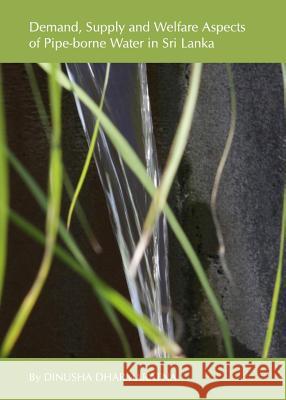Demand, Supply and Welfare Aspects of Pipe-Borne Water in Sri Lanka » książka
Demand, Supply and Welfare Aspects of Pipe-Borne Water in Sri Lanka
ISBN-13: 9781443833844 / Angielski / Twarda / 2011 / 280 str.
Water institutions establish the incentives, information, and compulsions that guide behaviour and influence economic outcomes. Water pricing policies that reflect the marginal cost of supply can bring about several positive benefits in the pipe-borne water sector including: 1) greater water use efficiency; 2) an increase in revenues that can be utilised to improve services; and 3) additional funds to enhance and expand the operation and maintenance of pipe-borne water supply systems. In order to design an appropriate pricing policy and bring about these positive changes, managers of pipe-borne water supply systems require an understanding of the determinants of water demand, supply and welfare changes. Further, the use of economic methodologies to estimate the effects of factors that influence pipe-borne water demand, supply and welfare in developing nations can assist water utility operators and policy makers to predict consumption responses to changes in water pricing. In turn, this provides important evidence for these decision makers to determine if price changes will result in higher revenues that can be used to fund critical infrastructure extension and maintenance. This is particularly important for developing nations where revenue constraints on water authorities can limit access to pipe-borne water supplies for large sections of the population. This book identifies under-pricing as the major problem faced by the Sri Lankan pipe-borne water sector. Recently, the water authority in Sri Lanka restructured its pricing strategy for pipe-borne water with the objectives of reducing water consumption and expanding the network. However, the success of the current pricing structure in achieving these objectives is uncertain. Therefore, to overcome the problems, this study examines the use of cost-reflective alternative pricing strategies for pipe-borne water distribution services. The book evaluates current and alternative pricing strategies for water against the criteria of efficiency and equity while maintaining the financial viability of the national water utility. In order to analyse the welfare impacts, understanding the demand for pipe-borne water by different user groups and the cost of pipe-borne water provision must be considered.











